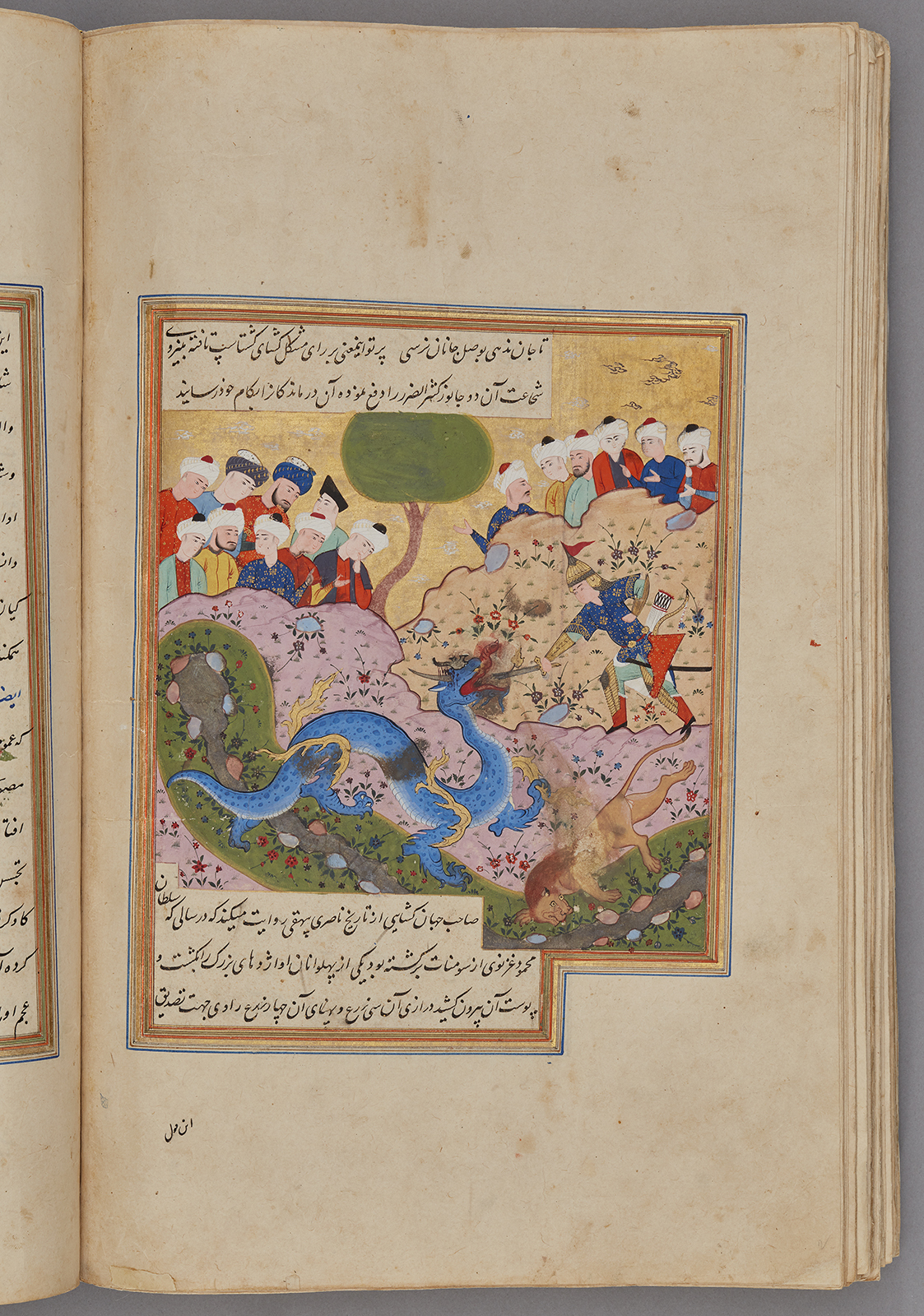Click on the image to zoom
A Test before the Marriage, Folio from a manuscript of Nigaristan
- Accession Number:AKM272.f221v
- Creator:Author: Ahmad b. Muhammad Ghaffari, Persian, died 1567 Scribe: Ahmad al-Shirazi
- Place:Iran, Shiraz (probably)
- Dimensions:38.7 cm × 25 cm × 6.4 cm
- Date:1573-74 CE/980 AH/AH 980
- Materials and Technique:Ink, opaque watercolour, and gold on paper
The miniature painting "A Test before the Marriage" is from an intact manuscript of Kitab-i Nigaristan, a collection of anecdotes and historical incidents written in prose by the historian and scholar Ahmad Muhammad Ghaffari (1504–1567/68) of Kashan in 1551–2. This illustrated manuscript, dated 1573, was probably produced in a Shiraz workshop.
See AKM272 for more information about the manuscript and links to the other illustrations.
Further Reading
The rocks which serve as a background for this illustration are set in two different colours, delineating the two sides of a deadly encounter between a man and a dragon. The lower part of the image is occupied by the mighty figure of the blue dragon looking at the man; further down on the right of the dragon is a lion, which has fallen to the ground with eyes wide open in terror.
The man's body language shows victory as he lowers his sword into the mouth of the dragon. On the upper level of the image, a crowd of spectators observes the events. Typical of paintings in the Persian miniature tradition, figures are not depicted to scale or according to the rules of perspective. For this reason, the spectators seem even bigger than the protagonist. Some spectators hold their finger to their lips as if amazed by the sight of the fight.
From the text we know that the scene depicts a challenge that Guštasp must meet before he can take a Byzantine princess for his bride: he must slay a lion and a dragon. In this illustration, he tries his luck. The passage in the upper field of the text is an excerpt from a poem, which means: "As long as you do not give your life, you will not achieve union with the Beloved" (tā ǧān nadahī bi wasòl-i ǧānān narisī). The text also reveals that Gushtasp is ultimately successful in the hunt.
Here, Gushtasp’s challenge follows the typology of a classical hunting scene in Persian miniature paintings. According to this tradition, the figures who represent the hunters are painted on a landscape which is often surrounded by rocks. Sometimes a part of the landscape is separated from the rest by a pond or a stream, and flowering trees are often scattered across the landscape.
- Elika Palenzona-Djalili
References
Sims, Eleanor. Peerless Images: Persian Painting and Its Sources. New Haven and London: Yale University Press, 2002.ISBN: 9780300090383
Note: This online resource is reviewed and updated on an ongoing basis. We are committed to improving this information and will revise and update knowledge about this object as it becomes available.


